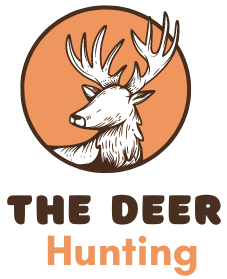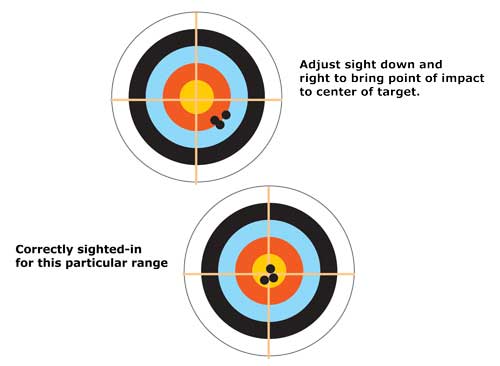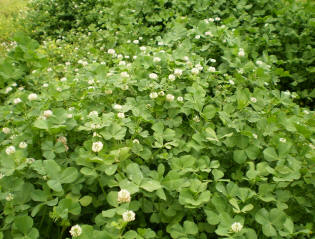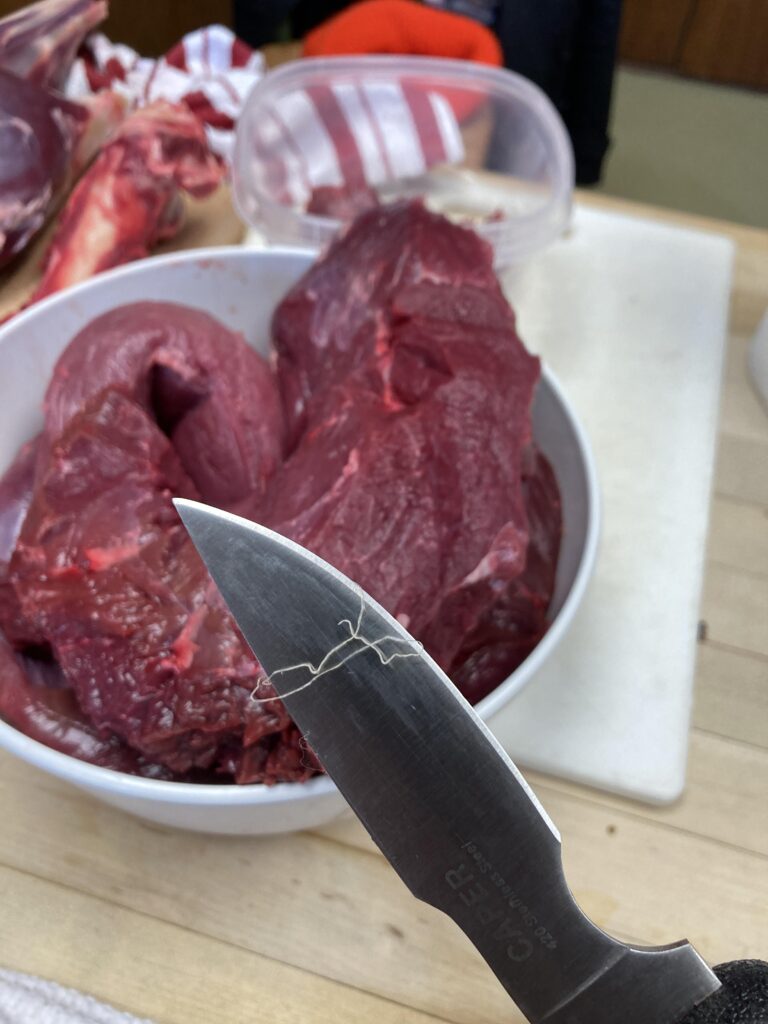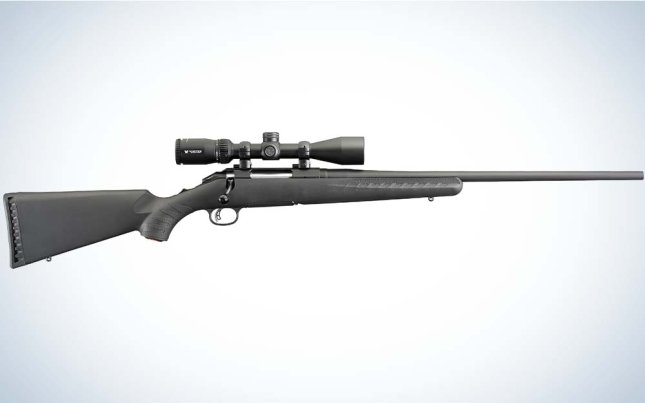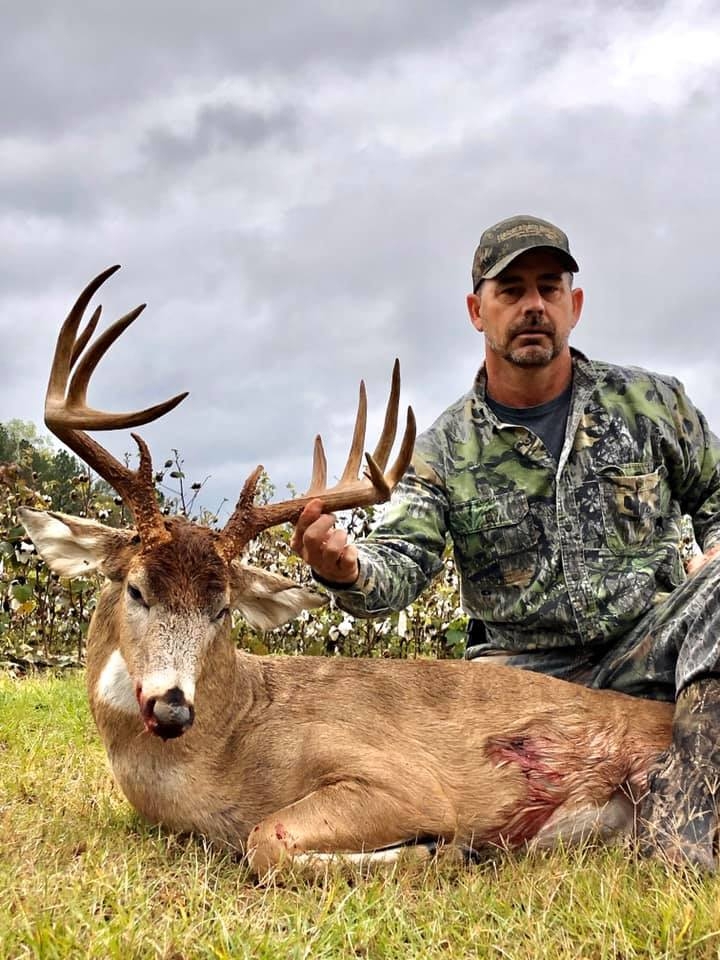Public Land in Kansas for Deer Hunting: Your Ultimate Guide
Deer hunting on public land in Kansas offers unique opportunities. With diverse landscapes and abundant wildlife, it’s a hunter’s paradise.
Kansas is known for its vast public lands that are perfect for deer hunting. The state provides a range of environments, from dense forests to open fields. This variety makes Kansas a top destination for hunters seeking adventure. Public lands are managed to ensure sustainable hunting, giving everyone a fair chance to enjoy the sport.
Whether you are a seasoned hunter or a beginner, Kansas offers something for everyone. These lands are accessible, well-maintained, and provide ample opportunities to spot deer. In this blog, we will explore the best public lands in Kansas for deer hunting and what makes them special.
Top Public Hunting Areas
Kansas is a paradise for deer hunters. The state offers numerous public lands where hunting is allowed. These areas are ideal for both seasoned hunters and beginners. In this section, we’ll explore some of the top public hunting areas in Kansas.
Popular Locations
- Milford Wildlife Area: Located near Junction City, this area spans over 19,000 acres. It offers excellent hunting opportunities for white-tailed deer.
- Tuttle Creek Wildlife Area: This area covers more than 12,000 acres. It is popular among hunters for its dense deer population.
- Elk City Wildlife Area: Situated in southeast Kansas, this area is around 13,000 acres. It offers a mixed terrain, making it a favorite among hunters.
Hidden Gems
- Fall River Wildlife Area: This 8,000-acre area is less crowded. It offers a peaceful hunting experience.
- Neosho Wildlife Area: A smaller area with around 3,200 acres. It is a hidden gem for deer hunters seeking solitude.
- Berentz-Dick Wildlife Area: Spanning over 4,500 acres, this area is known for its quiet and serene environment. It’s perfect for those looking to escape the crowds.
Each of these locations provides unique hunting experiences. Whether you prefer popular spots or hidden gems, Kansas has something for every hunter.
Hunting Regulations
Understanding hunting regulations is crucial for a successful and lawful deer hunting experience on public land in Kansas. These rules ensure safety, fair chase, and conservation of wildlife. Hunters must familiarize themselves with season dates, permits, and licenses before heading out.
Season Dates
The deer hunting season in Kansas varies by weapon type and deer species. Below is a quick guide to help you plan:
| Weapon Type | Season Dates |
|---|---|
| Archery | September 13 – December 31 |
| Muzzleloader | September 13 – September 26 |
| Firearm | December 1 – December 12 |
Important: Always check the Kansas Department of Wildlife and Parks website for any updates.
Permits And Licenses
Before hunting, ensure you have the necessary permits and licenses. Here is a breakdown:
- Resident Deer Permit: Required for Kansas residents hunting any deer.
- Nonresident Deer Permit: Required for nonresidents. This includes a hunting license.
- Hunter Education Certificate: Mandatory for hunters born on or after July 1, 1957.
Here are the costs for some common permits:
| Permit Type | Cost |
|---|---|
| Resident Deer Permit | $42.50 |
| Nonresident Deer Permit | $442.50 |
| Hunter Education Certificate | Free |
Purchase permits online through the Kansas Department of Wildlife and Parks portal.
Types Of Deer In Kansas
Deer hunting in Kansas is a popular activity. The state is home to two main types of deer: White-tailed Deer and Mule Deer. Each species has unique features and behaviors, offering different experiences for hunters.
White-tailed Deer
The White-tailed Deer is the most common deer in Kansas. They are known for their distinctive white underside of their tail, which they raise as a warning signal. These deer are adaptable and can be found in various habitats, from forests to grasslands. They are most active during dawn and dusk.
Physical Characteristics:
- Weight: 100-300 pounds
- Color: Reddish-brown in summer, grayish-brown in winter
- Antlers: Only males have antlers, which shed and regrow annually
Behavior:
- Diet: Herbivores, feeding on leaves, twigs, fruits, and nuts
- Breeding Season: Known as the rut, occurs from October to December
- Predators: Coyotes, bobcats, and humans
Mule Deer
Mule Deer are less common in Kansas but are still present, especially in the western parts of the state. They are named for their large, mule-like ears. These deer prefer open and rugged terrains, such as prairies and rocky hills. Mule Deer are more active during the day compared to White-tailed Deer.
Physical Characteristics:
- Weight: 120-300 pounds
- Color: Lighter grayish-brown
- Antlers: Males have branched antlers that shed and regrow
Behavior:
- Diet: Herbivores, primarily eating shrubs, leaves, and grasses
- Breeding Season: Rut occurs from November to December
- Predators: Coyotes, mountain lions, and humans
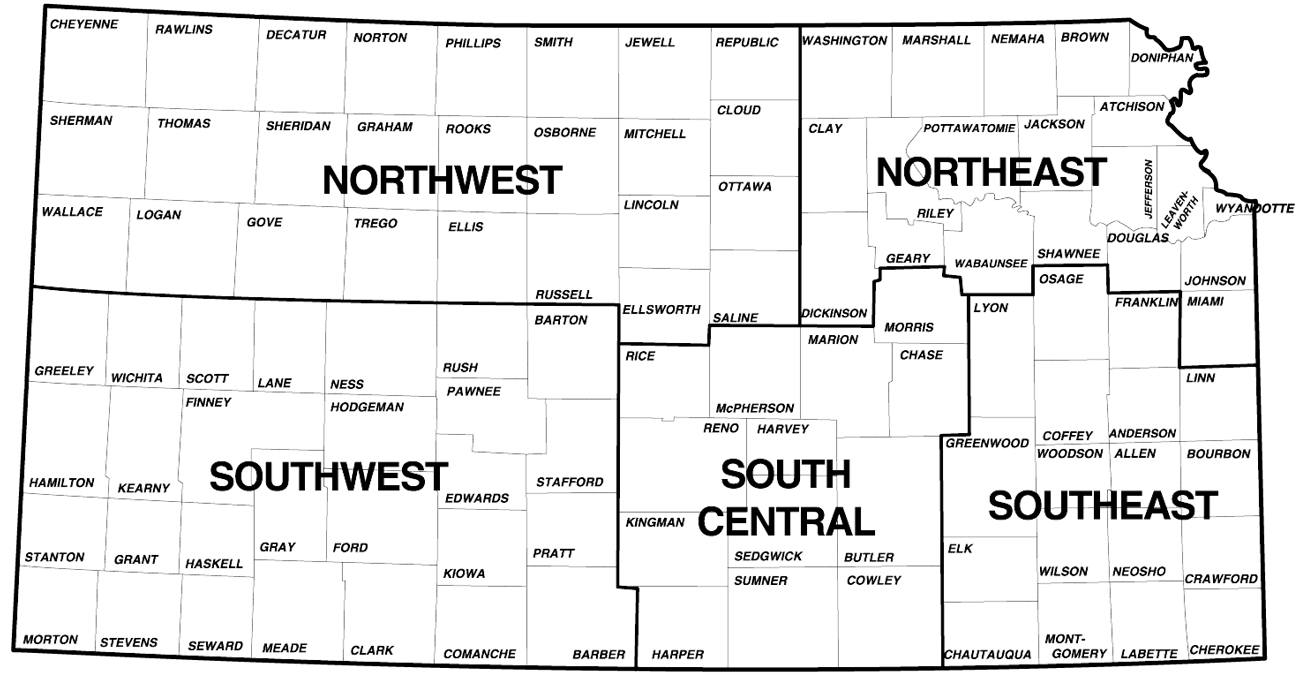
Credit: ksoutdoors.com
Gear And Equipment
Deer hunting on public land in Kansas offers an exhilarating experience. But, to be successful, having the right gear and equipment is crucial. Whether you are a seasoned hunter or a beginner, being well-prepared can make a significant difference in your hunting adventure. Below, we outline the essential gear and recommend some trusted brands to help you gear up efficiently.
Essential Gear
- Hunting Clothing: Wear camouflage clothing suitable for the season. Ensure it is weather-appropriate and comfortable.
- Hunting Boots: Invest in waterproof and insulated boots. They should provide good grip and ankle support.
- Rifle/Bow: Choose a reliable rifle or bow. Practice with it before heading out.
- Optics: Use quality binoculars or a spotting scope. They help in spotting deer from a distance.
- Backpack: A sturdy backpack is essential. It should have enough space for all your gear.
- Safety Gear: Always wear a blaze orange vest and hat. Safety should be a top priority.
- GPS/Map: Carry a GPS device or a detailed map of the hunting area. This helps in navigation.
- First Aid Kit: Keep a basic first aid kit in your backpack. It is vital for emergencies.
- Game Calls: Use deer calls to attract deer. Learn the different calls and their uses.
Recommended Brands
| Gear | Brand |
|---|---|
| Hunting Clothing | Under Armour, Sitka |
| Hunting Boots | Danner, Irish Setter |
| Rifle/Bow | Remington, Hoyt |
| Optics | Vortex, Leupold |
| Backpack | Badlands, ALPS OutdoorZ |
| Safety Gear | Hunter Orange, Primos |
| GPS/Map | Garmin, OnX |
| First Aid Kit | Adventure Medical Kits |
| Game Calls | Primos, Flextone |
Hunting Techniques
Exploring Kansas for deer hunting is an exciting experience. Knowing the right hunting techniques can make all the difference. Here are two popular methods: Stand Hunting and Spot and Stalk. Each has its own advantages.
Stand Hunting
Stand hunting involves waiting for deer from a fixed position. This method requires patience and preparation. Hunters often use tree stands or ground blinds. These help stay hidden and downwind from the deer.
Here are some tips for successful stand hunting:
- Choose the right location: Look for areas with food sources, water, and deer trails.
- Set up early: Arrive before dawn or in the late afternoon.
- Stay quiet and still: Minimize movement and noise to avoid alerting deer.
- Use scents and calls: Attract deer with deer urine or calls.
Stand hunting is great for those who prefer a stealthy approach. It allows hunters to observe deer behavior up close.
Spot And Stalk
Spot and stalk is an active hunting method. Hunters move through the terrain, looking for deer. This technique requires keen observation and stalking skills.
Follow these steps for effective spot and stalk hunting:
- Scout the area: Use binoculars or spotting scopes to locate deer from a distance.
- Plan your approach: Consider wind direction and terrain features.
- Move slowly and quietly: Use natural cover to stay hidden.
- Be patient: Wait for the right moment to make your move.
This technique is ideal for those who enjoy a more active hunting experience. It combines strategy, patience, and skill.
Both methods can be effective in Kansas’s public lands. Choose the one that suits your style and enjoy a rewarding hunt.

Credit: www.youtube.com
Safety Tips
Hunting deer on public land in Kansas is an exciting adventure. Safety is paramount. Following these safety tips can help ensure a safe and enjoyable trip. Let’s explore key areas to focus on.
Weather Preparedness
Kansas weather can be unpredictable. Being prepared is crucial.
- Check the weather forecast before your trip.
- Dress in layers to adjust to changing temperatures.
- Wear waterproof boots and carry rain gear.
- Pack a hat and gloves for cold mornings.
Always have a plan for shelter if severe weather strikes. Know the signs of hypothermia and heat exhaustion.
First Aid
A basic first aid kit can be a lifesaver.
- Include bandages, antiseptic wipes, and pain relievers.
- Pack tweezers and a small pair of scissors.
- Carry a whistle for emergency signaling.
- Bring any personal medications you might need.
Learn basic first aid skills. Knowing how to treat cuts, sprains, and bites can prevent minor issues from becoming serious.
Local Resources
Exploring public land in Kansas for deer hunting can be incredibly rewarding. The state offers vast areas teeming with wildlife. Using local resources can make your hunting experience even better.
Guides And Outfitters
Local guides and outfitters know the land well. They can help you find the best spots. These experts can enhance your chances of a successful hunt.
Here are some of the top-rated guides and outfitters in Kansas:
| Guide/Outfitter | Location | Contact |
|---|---|---|
| Kansas Hunting Co. | Central Kansas | (555) 123-4567 |
| Flint Hills Outfitters | Eastern Kansas | (555) 234-5678 |
| Big Buck Hunts | Western Kansas | (555) 345-6789 |
Community Support
The local hunting community is a valuable resource. They share tips, stories, and even secret spots.
Joining local hunting clubs and online forums can be very helpful. Here are some you might consider:
- Kansas Bowhunters Association: Connect with fellow bowhunters.
- Hunt Kansas Forum: An online space for hunters to chat.
- Kansas Deer Hunters Club: Local events and meetups.
Engaging with the community can improve your hunting skills. It can also make your experience more enjoyable.
Credit: headsupdecoy.com
Frequently Asked Questions
Where Can I Hunt Deer In Kansas?
Kansas offers numerous public lands for deer hunting, including Wildlife Areas, State Parks, and Walk-In Hunting Access (WIHA) areas.
Do I Need A Permit To Hunt Deer In Kansas?
Yes, you need a valid deer hunting permit and a hunting license. Non-residents require additional permits.
What Is The Best Time For Deer Hunting In Kansas?
The best time for deer hunting in Kansas is during the rut, typically in mid-November.
Are There Any Regulations For Deer Hunting In Kansas?
Yes, Kansas has specific hunting regulations, including season dates, bag limits, and weapon restrictions. Always check the latest guidelines.
Conclusion
Kansas offers great public land for deer hunting. The state’s diverse landscapes provide ample opportunities. Hunters can enjoy a rewarding experience. Research areas, follow regulations, and prepare well. Public lands like Tuttle Creek, Milford, and Perry are excellent choices. Respect nature and fellow hunters.
Happy hunting and safe adventures await in Kansas.
